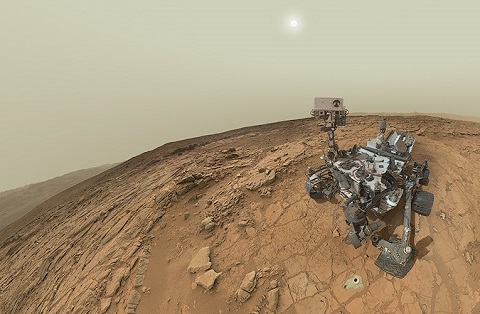What was that bright spot in the sky last night? What would happen to an astronaut without a spacesuit? Why do stars twinkle? Yevgeni Kissin lights up when he hears questions like these. Kissin, a PhD candidate in the department of astronomy and astrophysics and the mastermind behind U of T’s Ask An Astronomer service. Visitors to the website can submit questions about any aspect of stargazing, space or even astrophysics, and get a real astronomer’s answer.
So far, Kissin hasn’t been stumped. With a department full of experts at his disposal, “we have yet to get a question that nobody knows,” he says. “Eventually it’s likely to happen, but it hasn’t happened yet.”
That’s not to say that some of the questions weren’t tricky. “Somebody asked where did the water on Earth come from,” he says. “That was quite interesting to figure out.” His answer ranges over planetary formation, asteroid research and the history of the solar system.
Kissin studies the interaction between planets and the stars they circle around in order to explain the origin of magnetic fields seen in a class of stars called white dwarfs (our own sun will probably evolve into one). He came up with the idea of the website on his own, then received support to host the page from U of T’s astronomy group: the department of astronomy and astrophysics, the Dunlap Institute for Astronomy and Astrophysics, and the Canadian Institute for Theoretical Astrophysics.
He gets questions from kids, teens and adults from a wide range of professions. “Astronomy seems to be a very attractive field that a lot of people are interested in,” he muses. “I think the major reason is cultural: for millennia, human civilization has been exposed to the night sky, trying to figure out what’s going on there, and how do we fit in to this whole universe. But also – and that was the reason for me, at least – is the scientific aspect of it. How does the world work, why are the stars there, why does the earth move around the sun with a year-long period – these are the things that draw me, and I’m sure others.”
Ask an Astronomer uses that curiosity as a springboard, not just to provide a public service, but to support U of T’s Astronomy Outreach program. “Astronomy is thought to be a sort of gateway science,” says Kissin. “It’s very easy to do astronomy on an amateur basis. It just requires a pair of binoculars, or a small telescope and you can already see a whole host of interesting objects. So it’s a good way to get people interested in science.” U of T’s Outreach programs aim to promote general interest in science, critical thinking and appreciation of scientific work.
Kissin and team also hope to defuse some of the wilder astronomy-based rumours that race around the internet at the speed of light – and, like comets, make periodic returns. “All sorts of doomsday theories could easily be put to rest if a small knowledge of astronomy was acquired,” says Kissin.
Is there something you’ve always wanted to know about the universe? Send your queries to ask@astro.utoronto.ca. And check out the answered questions at universe.utoronto.ca/ask-an-astronomer – including what would happen to that spacesuit-less astronaut.
What is the object originating at U of T that has travelled the farthest from Earth?
We asked Yevgeni Kissin, the U of T grad student behind Ask an Astronomer. His reply:
“There are satellites that were built in the space labs at the University of Toronto Institute for Aerospace Studies. MOST (Microvariability and Observation of STars), was a fully Canadian mission, launched about 10 years ago to make astronomical observations. And two of the six BRITE Constellation nanosatellites, launched in February 2013, were built here at U of T.” All three orbit about 800 km above the surface.
Kissin even researched U of T astronauts to make sure his answer was accurate. The university’s four astronauts, former department of surgery prof Dafydd Rhys Williams and alumni Ken Money (BA 1958 Victoria, PhD 1961), Roberta Bondar (PhD 1974) and Julie Payette (MASc 1990), have travelled about 400 km above Earth’s surface in various space shuttle and International Space Station missions.
Recent Posts
U of T’s Feminist Sports Club Is Here to Bend the Rules
The group invites non-athletes to try their hand at games like dodgeball and basketball in a fun – and distinctly supportive – atmosphere
From Mental Health Studies to Michelin Guide
U of T Scarborough alum Ambica Jain’s unexpected path to restaurant success
A Blueprint for Global Prosperity
Researchers across U of T are banding together to help the United Nations meet its 17 sustainable development goals






2 Responses to “ Astronomy’s Answer Man ”
One of my students asked about the moon's movement away from the earth at 2 cm a year. He wants to know what will happen to the moon: will it escape Earth's gravity completely, or will it reach a rebound point and move back toward the Earth? Thank you for considering my question.
Hi Carol, Yevgeni has answered your student's question on Ask an Astronomer - look in the "Solar System" section where the question is answered under the heading ""What causes the Moon to move away from the Earth? Will it ever stop?" (Very cool answer too, I hope your student enjoys.)